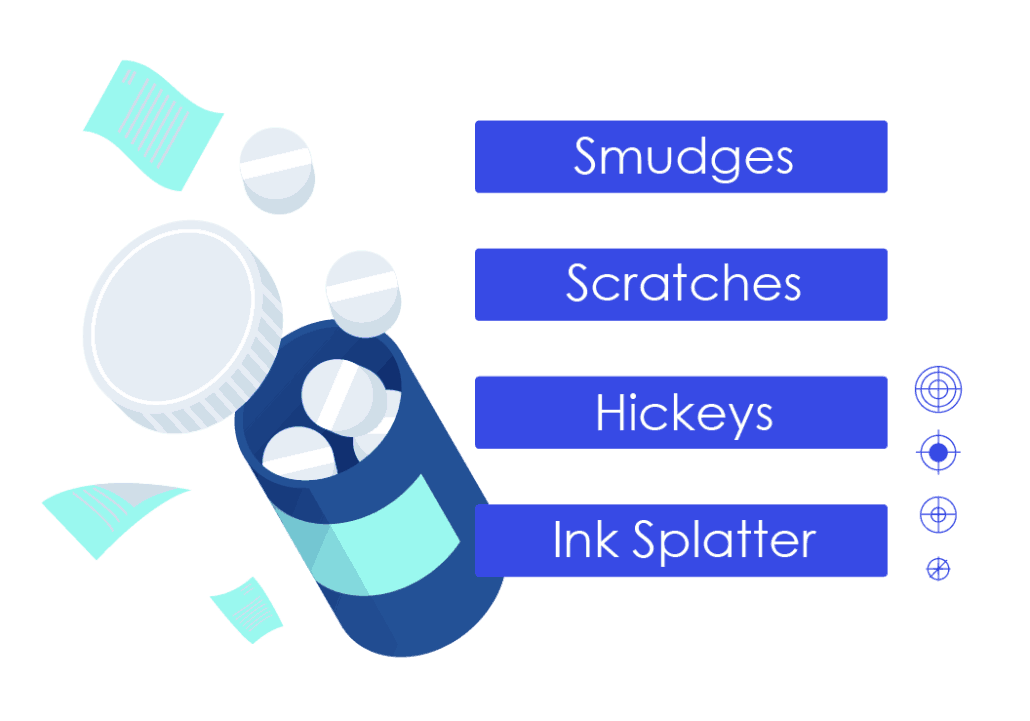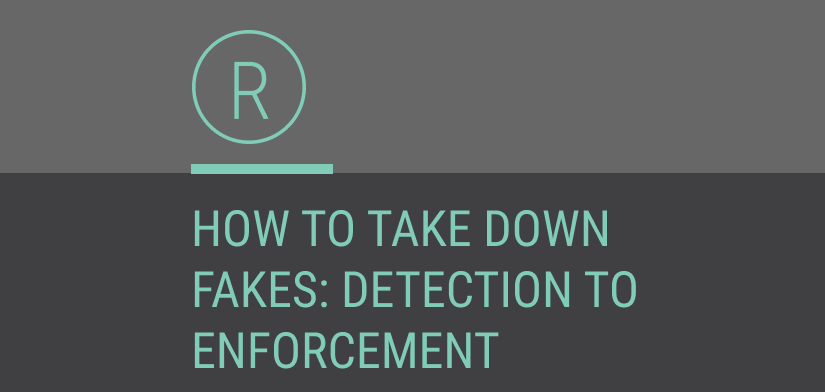From Detection to Enforcement: How Brands Report and Remove Fake Merchandise
Counterfeit merchandise is a global epidemic, infiltrating industries across fashion, electronics, pharmaceuticals, luxury goods, and beyond. According to the OECD, the trade in fake goods is now worth over $467 billion annually, accounting for a significant share of global commerce. While some consumers may dismiss counterfeits as harmless imitations, the reality for brands is far more damaging. Counterfeiting undermines brand equity, deceives consumers, and puts their health and safety at risk—especially when it comes to fake pharmaceuticals, cosmetics, or electronics.
For businesses, the financial toll can be substantial. Counterfeit goods can siphon revenue, devalue legitimate products, and damage consumer trust that may have taken years to build. In many cases, fake merchandise is linked to organized crime and exploitation, making it a serious ethical concern as well. Establishing a strong detection and reporting process is essential not only to stop these infringements quickly but to deter future violations and maintain long-term brand integrity.

Signs of Fake Merchandise
Spotting fake merchandise is the first step toward removing fake merchandise. Although counterfeiters are growing increasingly sophisticated, there are still consistent red flags that brands and consumers can watch out for to help identify fake products early.
Packaging Inconsistencies
Authentic brands invest heavily in consistent, high-quality packaging. This includes the use of specific colors, textures, embossed logos, and security tags. Counterfeit items often cut corners. You may notice spelling mistakes, pixelated images, incorrect logos, or packaging that feels flimsy or unfamiliar. Even small differences in label placement, barcode printing, or packaging material can signal counterfeit activity.

Pricing Anomalies
While discounts are common in e-commerce, excessively low pricing compared to standard retail or reseller channels should raise immediate suspicion. Counterfeiters often lure unsuspecting customers with deals that are “too good to be true” in an attempt to push volume before being detected. Brands should set up systems to flag unusually low prices on third-party listings.
Unofficial Sellers
Pay close attention to where and from whom the product is being sold. Sellers operating outside of a brand’s official distribution network, or sellers with no reviews, incomplete product listings, or suspicious contact details, are often distributing counterfeits. The risk is even greater when purchasing from unfamiliar international platforms or lesser-known websites without secure payment methods.
Example: Genuine vs. Fake
Imagine a premium footwear brand. The genuine version of a sneaker might have high-quality stitching, a QR code embedded under the tongue that links to a certificate of authenticity, and a box with embossed logos and holographic stickers. A counterfeit version may replicate the appearance at first glance but will often have misaligned logos, sloppy stitching, or QR codes that lead nowhere. These subtle but telling differences are exactly what trained brand protection teams and technology tools like BrandShield’s platform are designed to detect.
Step-by-Step Guide to Reporting Fake Merchandise
Once a suspicious item is identified, brands must act swiftly and methodically to document the case and initiate takedown procedures. Here is a practical five-step approach to reporting fake listings and enforcing your rights.
Step 1: Document the Evidence
Start by capturing as much evidence as possible. This will help you remove fake merchandise. This includes high-resolution screenshots of the product listing, seller profile, product images, pricing, customer reviews, and any communication you’ve had with the seller. Make sure to copy URLs and record the platform name and the date the evidence was collected. Accurate documentation creates a clear record that can support legal claims and enforcement action.
Step 2: Determine Jurisdiction and Platform
Understanding where the counterfeit item is being sold is critical. Each platform has its own reporting process and enforcement policy, and different jurisdictions have varying intellectual property laws. Determine whether the infringement is occurring on a global marketplace such as Amazon or Alibaba, on a social media platform like Facebook or Instagram, or on a standalone website hosted in another country. This step helps you route the report through the most effective legal and enforcement channels.
Step 3: Contact the Seller and the Platform
Before escalating the issue legally, it is advisable to contact the seller directly. Request that the listing be removed and provide a clear explanation of the IP violation. Simultaneously, submit a report through the platform’s formal IP or counterfeit reporting mechanism. Platforms like Amazon, eBay, and TikTok often have streamlined portals for trademark owners. If you’re a BrandShield client, this step can be handled automatically through our enforcement dashboard, saving time and improving response speed.
Step 4: Escalate if Necessary
If the platform or seller fails to respond in a timely or satisfactory manner, the case should be escalated. This could involve engaging legal counsel, filing complaints with regulatory agencies, or alerting customs officials. BrandShield supports this step by providing case files, legal templates, and documentation needed to trigger formal legal enforcement or customs alerts.
Step 5: Monitor the Outcome and Prevent Recurrence
After submitting your report, continue to monitor whether the item was removed and if the seller has attempted to re-list the item under a new identity. Ongoing vigilance is key. Repeat offenders may use the same IP address, images, or pricing structures. Use these patterns to proactively flag future threats. This data also helps inform long-term brand protection strategy.
How BrandShield Supports Brands in the Reporting Process
BrandShield is designed to handle the entire reporting lifecycle, from the earliest stages of threat detection to full enforcement and post-takedown monitoring. Our platform combines the power of automation, advanced AI algorithms, and dedicated human expertise to deliver a streamlined, end-to-end solution. This means brands can identify potential infringements the moment they appear online, initiate takedown procedures automatically, and continuously track the effectiveness of their enforcement strategy.
Our system not only surfaces individual threats, but also maps the larger network behind them, revealing patterns, repeat offenders, and related listings across multiple platforms. This integrated approach helps brands stay several steps ahead of counterfeiters and reduces the time and resources typically required to manage widespread digital abuse.
Monitoring and Detection
Our platform scans hundreds of digital sources in real time, including online marketplaces, social media platforms, app stores, and websites. Using AI and machine learning algorithms, we detect and cluster related threats, revealing coordinated networks of infringers that might otherwise go unnoticed. We track brand mentions, logo misuse, fake accounts, and replica product listings.
Takedown Automation
When threats are detected, BrandShield initiates automated takedown processes customized by platform and region. Our system submits infringement reports, follows up with the appropriate contacts, and logs every action in a centralized dashboard. This greatly reduces the manual effort needed from brand teams and ensures consistent enforcement.
Counterfeit Intelligence and Custom Alerts
BrandShield provides actionable insights into counterfeit trends, high-risk regions, and repeat offenders. We also offer custom alerts that notify clients and even customs authorities when particularly harmful or large-scale infringements are detected. This helps our partners prioritize enforcement and allocate resources effectively.
Case Study: FRANKIE4
FRANKIE4 is a fast-growing Australian fashion label revolutionizing women’s footwear. Designed by women, for women, the brand combines cutting-edge engineering with podiatrist-designed support—offering a new standard of comfort without compromising on style. With features in Forbes, Vogue, Cosmopolitan, and more, FRANKIE4 has earned global recognition for its commitment to wellness and innovation.
As their online visibility increased, so did the volume of phishing sites, fake ads, and impersonation scams targeting their brand. These malicious actors mimicked FRANKIE4’s look and feel – tricking customers into placing fraudulent orders through copycat websites and social ads. The result? Lost revenue, rising support cases, and growing concern over brand integrity.
That’s when FRANKIE4 turned to BrandShield.
By partnering with BrandShield, FRANKIE4 gained a proactive solution powered by real-time threat detection, AI-based analysis, and automated enforcement across websites, ad networks, and social platforms. The result: an impressive 97.5% scam website takedown rate and 100% fraudulent ad removal.
This shift from manual detection to automated brand protection has helped FRANKIE4 minimize customer risk, reduce fraud-related complaints, and confidently scale paid campaigns—knowing their brand and customers are safeguarded.
Best Practices and Preventive Measures
To remain ahead of counterfeit threats, brands must develop a layered defense that includes legal preparedness, proactive monitoring, and consumer education.
Establish a Brand Protection Policy
Define clear internal policies for how counterfeit threats are identified, reported, and escalated. Assign responsibility across legal, marketing, and e-commerce teams. These policies create alignment and ensure faster response times.
Register IP Assets Globally
Ensure that your brand’s trademarks, product designs, packaging elements, and digital assets are registered in all major markets. Registration is a prerequisite for enforcement on most platforms and in most legal systems.
Monitor Key Platforms Daily
Use brand protection tools like BrandShield to automate scans of known hotspots for counterfeits. Manual monitoring is no longer feasible at scale. Automated alerts and dashboards can help you respond before reputational damage occurs.
Educate Your Consumers
Consumers are your first line of defense. Use your website and social media to share tips on how to spot fake products, where to buy official merchandise, and how to report suspicious sellers. This improves detection and builds trust with your audience.
Adopt Authentication Features
Incorporate tamper-proof elements such as QR codes, NFC-enabled tags, serial numbers, or holograms into your product packaging. These features not only help consumers verify authenticity but also aid law enforcement and customs in identifying counterfeits.
FAQ
How many fake listings should I expect to monitor monthly?
It depends on your industry, product type, and brand visibility. High-profile brands often deal with hundreds to thousands of new listings each month, particularly in sectors like fashion, beauty, and electronics.
Can I report fake items myself or do I need legal help?
Many platforms allow rights holders to report violations directly. However, for complex or persistent infringements, legal support or complex enforcement, BrandShield can significantly improve your success rate and reduce response time.
How long does the takedown process usually take?
Response times vary by platform. Some act within 24 hours, while others may take a little longer. BrandShield helps initiate takedowns immediately and tracks each case until resolution.
What happens after a seller is removed?
Sellers often attempt to re-list under new usernames or websites. Continuous monitoring and clustering technology are essential to detect these patterns and take additional action.
Will marketplaces refund the brand or the consumer?
Most marketplaces prioritize consumer refunds. Brands typically do not receive compensation, which underscores the importance of preventing fake listings from going live in the first place.
Does BrandShield support global and regional marketplaces?
Yes. BrandShield provides coverage for both global platforms like Amazon, eBay, and AliExpress and regional platforms across Europe, Latin America, Asia, and the Middle East.
Conclusion
The fight against counterfeit merchandise is ongoing, but brands are not powerless. With the right strategy, tools, and partners, brands can detect fake listings early, report them effectively, and enforce their rights across the digital landscape. Prevention is as important as enforcement, and every successful takedown is a step toward protecting brand value, consumer safety, and market integrity.
If your brand is facing counterfeit threats or you’re unsure how exposed you might be, we’re here to help.
Contact BrandShield today for a free brand audit and discover how we can help you remove fake merchandise quickly and efficiently.
Get a free brand assessment: Schedule a demo with BrandShield
